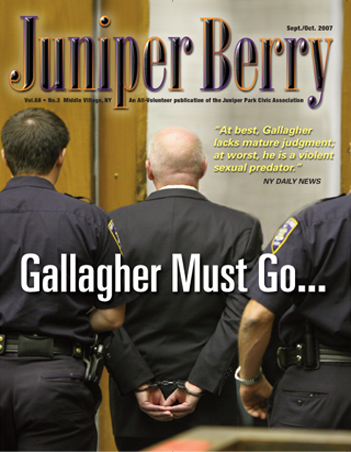Since the beginning of the year 2007 there have been two minor derailments of a propane tank car in the Fresh Pond Road Rail yard – the first at the beginning of the year on January 17th and the second more recently on July 6th. In order to provide a better understanding of the danger – or should I say lack of danger – associated with the transportation of liquid propane by railroad tank cars, the following information is being provided:
Flammable gases shipped by rail rarely, if ever escape from the tank cars in which they are shipped. Railroad tank cars are incredibly robust and have been subjected to rigorous testing over the approximate 100 years that they have ridden the rails.
To make this point and in conjunction with its overall safety program, The New York & Atlantic Railway is attempting to acquaint first responders, elected officials and the general public with the specifics of rail transport of flammable gasses and, has begun a series of rail tank car familiarization courses.
These courses will be conducted in three stages. The first will be aimed at the leadership of The New York Fire and Police Departments and The New York Office of Emergency Management. The second phase will involve the first responders themselves. This will be by far the largest group, potentially numbering into the several hundreds. The final round will be offered to elected officials and the general public. While the content of all three courses is very similar, different levels of detail (such as mechanical specifications of individual types of tank cars) will be presented to each group.
Allen Richter, lifelong Hazardous Material Expert, of Conrail is the main presenter for these courses. Anacostia Rail Holdings, parent company to New York & Atlantic, has sent corporate Safety Officer, Tom Leopold to participate in the classes. Mark Westerfield, the author of the course, has contributed as well.
The first classes were held at The New York & Atlantic’s Fresh Pond Yard on August 28 and 29, 2007. There were about 35 participants at each, primarily from The New York Fire Department. However, representatives from NYPD and OEM were in attendance as well. Richter covered rail safety, the types of commodities carried in tank cars, physical characteristics of tank cars, specific hazards of flammable gasses, damage assessment and remediation.
A new tank car was placed directly along side the training site. Attendees were given an opportunity to familiarize themselves with the valves and brake apparatus of the car and were given a detailed description of each component. Richter stressed the robust construction of railroad tank cars.
There are 1.6 million tank car shipments per year or; about 4,400 tank cars per day in North America and 99.998% of hazardous materials arrive without a release caused by an accident. This performance amounts to 1 release per 34,000 shipments.
Railroad tank cars carry approximately the same ton-miles of hazardous materials as tank trucks yet, have only 5% of the number of releases.
The Railway Supply Institute and Association of American Railroads (RSI and AAR) have performed extensive studies on tank car safety. They have reviewed over 40,000 records of tank car damage in accidents. The research covered a 30-year period ending in 1995. About 25% of the tank cars are pressurized type, similar to the type the NY derailed in Fresh Pond. Review of RSI/AAR reports shows that:
– There has been no loss of product from a pressurized tank car due to an accident
When the train speed was less than 5 MH.
– Only 16 pressurized tanks cars in railroad yards have lost product due to an accident. In 14 of these 16 cases, less than 5% of the lading was loss.
The conclusions to be drawn from these numbers are quite clear. There is almost no chance of product escape during a yard derailment, and; even less in the process of re-railing a derailed car.
Last year, the New York & Atlantic Railroad handled 513 cars of Liquid Propane Gas (LPG). The railroad does not handle any other compressed gases, flammable or otherwise and does not handle any commodities that would be classified as an “Inhalation Hazard”.
The next round of classes is scheduled for September 13 & 14. Classes in October are anticipated, but no date has been set yet. NYA is attempting to secure cooperation from connecting railroads such as the Canadian Pacific and CSX. The NY&A Railway anticipates that classes and public meetings will extend into the spring of 2008.



